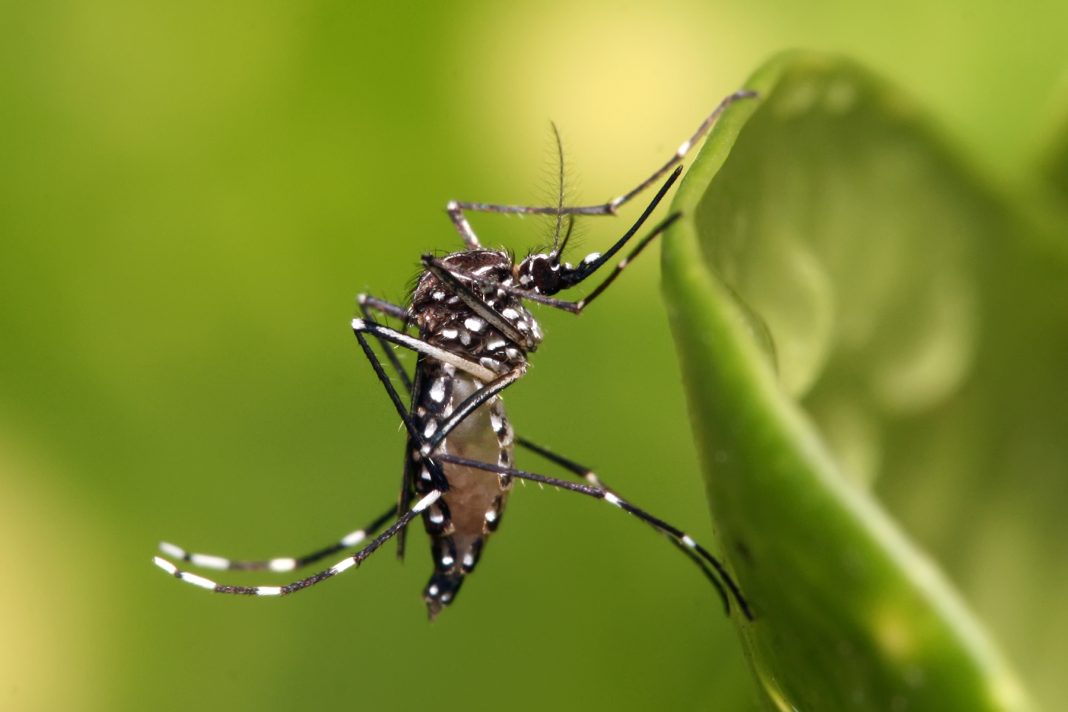Infectious diseases carried by mosquitoes—such as dengue, Zika, chikungunya, and yellow fever—are a growing concern in the United States and around the world. The control of the spread of these diseases falls largely on the control of their vector. This week, a landmark approval was granted of a pilot program in the Florida Keys to release genetically modified Aedes aegypti mosquitoes in an effort to help control the spread of these infections.
At the center of the project is Oxitec, the U.S.-owned, U.K.-based company with programs to combat and control insect pests such as mosquitoes, diamondback moths, medflies, and more.
Approved by the Florida Keys Mosquito Control District (FKMCD) Board of Commissioners on Tuesday, the Aedes aegypti mosquito pilot project comes more than 10 years after FKMCD first invited Oxitec to pilot its technology in the Keys. The agreement follows approval from nine government agencies including the U.S. EPA and State of Florida agencies.

“I’m surprised it took this long to get this far,” said Omar Akbari, PhD, associate professor at the University of California, San Diego. “Oxitec has been trying for many years to be able to do this, but environmental groups and residents have pushed back.” Akbari told GEN that he’s glad to see that they have been able to overcome those hurdles because “it’s a really safe technology.”
“I’m happy that it’s going forward,” noted Akbari. “Now that they’ve accomplished this milestone, it may make future applications move forward more smoothly.”
How does releasing mosquitoes decrease the population?
Oxitec will release male Aedes aegypti mosquitoes that are homozygous for a self-limiting gene. When the Oxitec male mosquitoes are released, they will reproduce with wild females. In that mating, the gene will be inherited by both male and female progeny, all of whom will be heterozygous. The female progeny will die. The males will continue to live and reproduce and, when they do, will pass the gene to 50% of their progeny. This results in 50% wild-type female progeny that will maintain the mosquito population. The maintenance of wild-type females in the population raises an important question of how many times a release will have to be done to suppress the population enough to make an effective vector control strategy.
Oxitec has performed field trials in areas such as the Cayman Islands and Brazil, illustrating that this strategy can be successful. But questions remain in an area as large as the Florida Keys or, further, the entire state of Florida. For example, can Oxitec’s technology scale reliably for larger areas? How many mosquitoes would it take to run an effective program of that size, what would the cost of such a program be, and how effective will it be?
Akbari describes Oxitec’s landmark decision as “paving the yellow brick road for other technologies to make an impact” on these problems. One area of improvement that Akbari pointed to is the removal of antibiotics from the protocol. Oxitec mosquitoes are raised in the presence of the antibiotic tetracycline, in order to repress the self-limiting gene while the engineered mosquitoes are being raised, to allow them to breed and grow into adulthood. Akbari noted that the presence of tetracycline during development could affect the fitness of the mosquitoes, resulting in the need to release increased numbers, which would increase cost.
If Oxitec had failed, it would have made it much harder for the next generation of mosquito control approaches to have a chance, said Akbari. For example, Akbari’s lab has developed a system called pgSIT that uses CRISPR-Cas9 gene editing to generate strains of mosquitoes. The method, described in a 2019 Nature Communications paper titled, “Transforming insect population control with precision guided sterile males with demonstration in flies,” is a novel CRISPR-based sterile insect technique (SIT) technology termed precision guided SIT (pgSIT). Demonstrated in Drosophila, the method uses two homozygous strains, one expressing Cas9 and the other expressing double-guide RNAs (dgRNAs) that result in biallelic knockouts of target genes that give rise to 100% sterile males. Not only has the Akbari lab shown the males are fit and can compete for mates, but the technology has other advantages such as not needing antibiotics, and being able to be deployed as eggs.
“The beauty is that the eggs can be saved up to one year [at least],” noted Akbari, “and can be dried, saved, and stored until deployment is desired.” This means that they can be produced in one area of the world and shipped to wherever they are needed.
“We have to keep finding better solutions,” asserted Akbari, because “these diseases are terrible and kill people.” Mosquitoes kill more people than any other animal, he noted.
As for now, Oxitec’s website says that the FKMCD and Oxitec will begin final planning for the project, which will include decisions on timing and locations. With a decade of experience in public engagement and education, FKMCD and Oxitec have launched a new public educational webinar series and plan to launch additional efforts with the local community as the project progresses.






